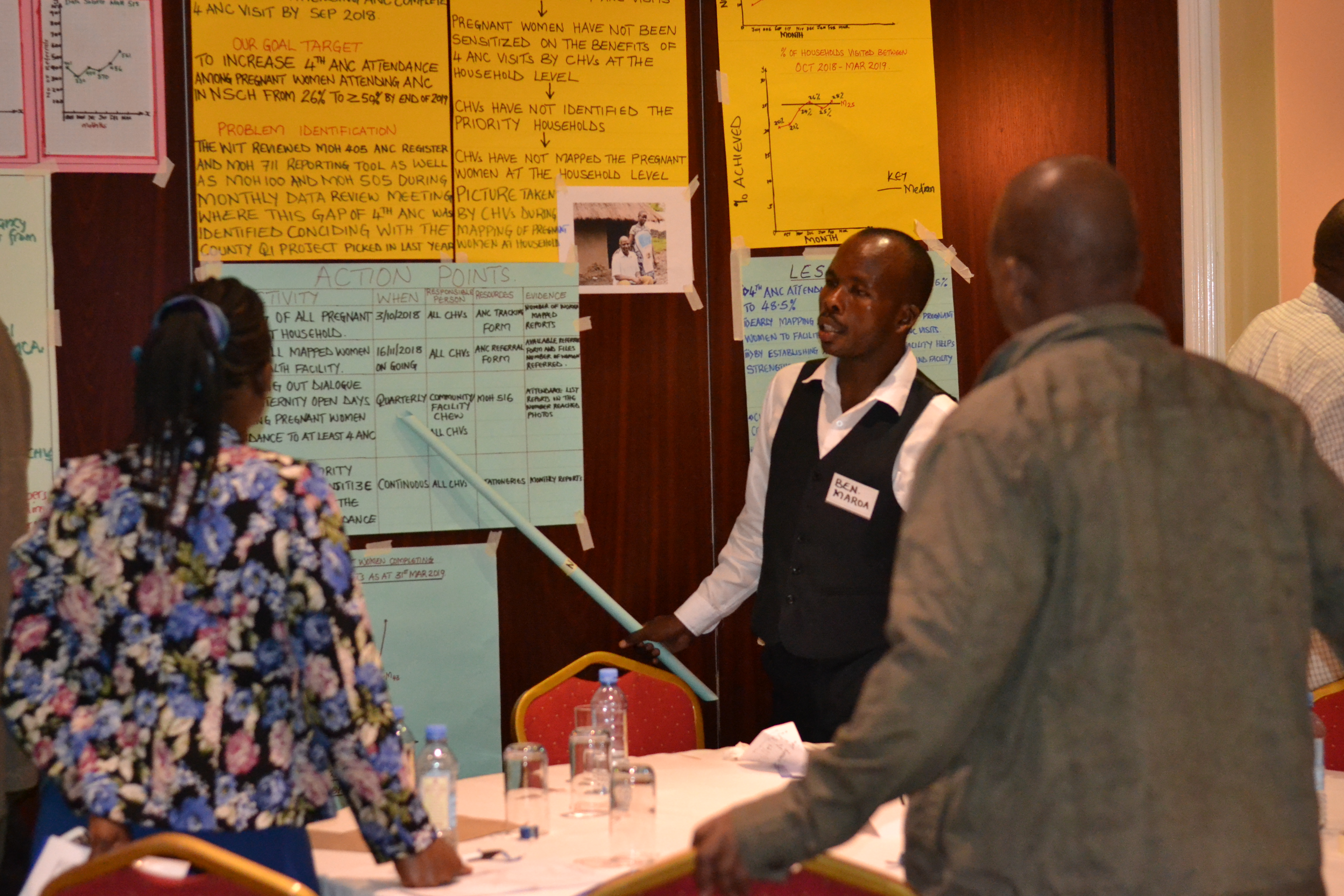Sustaining community QI

USAID SQALE funding is coming to an end. We asked participants at the 2019 Learning Event how they would sustain the momentum of their work on QI once the project stops.
Participants felt that a range of activities within the project had been helpful and worked well. These included. The most popular elements of the work were: systematic problem identification and interventions; one-to-one and more supportive supervision; Learning Events and mechanisms to share best practice; DQA and the ability to compare data across the levels of the health system; the Community Follow-Up Tool and an improved ability to identify gaps in the programme; community WIT meetings and strengthened team work between CHVs, CHEWs and people working at the sub-county level. Other elements that were mentioned were the coaching that the teams receive and community dialogue and action days.
Teams felt that technical support and supervision from LVCT Health had helped them deliver the programme as had frequent meetings and evaluations, such as the Learning Events and certificates and competitions. A focus on the WIT files has enabled them to have better documentation of the program as have the documentation of success stories. They mentioned that multi-disciplinary teamwork (including those working on nutrition and reproductive health) has been important as has joint action between the different levels of the health system (between the community and facility and between the facilities and the county level). This also means that information is cascaded and communicated between the different levels. The provision of MoH tools has helped teams track and improve the accuracy of their work. Dialogue and action days were mentioned and that community members are more empowered and inspired to lead QI efforts. As a result, QI has become routine and entrenched. Including DQAs in regular meetings is an example of this. Furthermore, community dialogue days are now more closely aligned with evidence in terms of their focus and scope. This also enables better feedback of the data to the community. Household visits are now better coordinated.
Participants felt that they would like to continue to conduct the following activities once the project has finished:
- Mentoring and coaching
- Regular dialogue days
- Regular administration of the Community Follow-Up Tool
- Regular supervision
- Regular WIT meetings
- Continued documentation of WIT activities
- DQAs
- Mapping households
- Mother-to-mother support groups
- Strengthening support groups
- Working together – improving the linkage between CHU and link facilities
“We are doing DQAs without support even now…when the facilities come with their data, we can give them feedback right away. There is funding even from the county government”
However, there may be challenges in continuing with some of these interventions due to staff turnover, shortages, maldistribution and changes in leadership. There is a need for a critical mass of people committed to QI at all levels along with champions for the work. The work needs to be properly documented or there is a risk that interventions that do not work will be repeated. Furthermore, newly funded programmes and MoH priorities such as immunization drives may take attention away from routine QI activities. Participants felt that mother to mother groups require ‘something small to give’ and that other activities such as dialogue days happened because LVCT Health provided financial support for them. Some participants were concerned about the relationship with facilities and potential loss of data between referral and arrival at services.
Participants related that some activities are already integrated into annual workplans. These include:
- Mapping of pregnant mothers, health education for pregnant women and a waiting area for pregnant women to encourage skilled delivery. Pregnant adolescents and teenagers are targeted in some plans.
- Supportive supervision, WIT meetings and DQAs (sub-County) and the Community Follow-Up Tool
- Quarterly dialogue days
- Printing and copies of Level 1 materials and tools at facility
- Transport reimbursement for CHVs supporting/accompanying clients referred for delivery
- Cascading of QI to new CHUs
Participants felt that the CHS Bill will help as this guarantees that CHVs receive a stipend. But for some counties there is a need to budget for the transport and refreshment costs of community WITs. More advocacy work is needed with county government to secure resources for QI and some participants felt that teams should explore other income generating activities within the CHUs to cover transport costs.